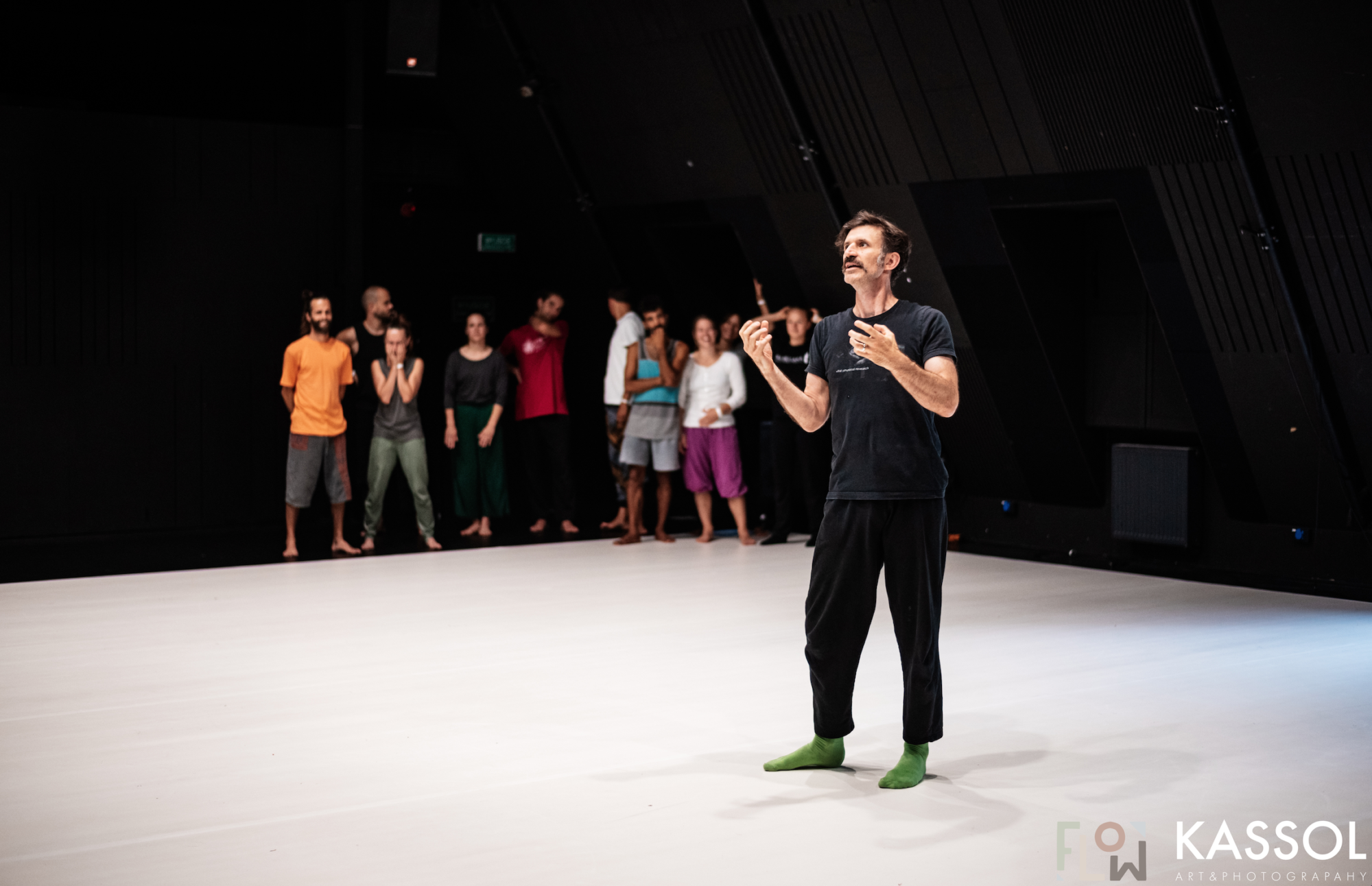Here is the text from the program of Sentimental Pussyfooting, Non Fiction’s ground-breaking performance from 2009 –
Sentimental Pussyfooting – a study in plagiarism
How does an idea become part of the public artistic palette? Can an idea be used
without being seen as a reference?
performed by Kelly Dalrymple, Sonshereé Giles, Sean Seward, Adam Venker, Andrew Wass.
directed by Andrew Wass
Counterpulse Theater San Francisco
Feb 29th and March 1st 2008
Imagine if all of dance consisted of a performer wearing a video projector?
Or done in 4:33 of silence? Or was 5 dancers on a diagonal line?
The way I see it dance, or most dance, has the same structure – lights go on, music and movement start and they all end together. It’s essentially the same skeleton every time. Whether it’s San Francisco Ballet or Robert Moses, the skeleton is the same. Just the meat
around the bones has changed. The costumes are different, the music is different, the
performers are different etc. But still essentially the same piece.
In this show, I am using works by Trisha Brown, John Cage, Jess Curtis, Paul Taylor,
and Yoko Ono as points of departure. Some pieces will be fairly straightforward recreations
of the structures. Other pieces are using a structure or an element from a piece to examine
or express something different from the original intention. The title of the show and all but
one title of the pieces are taken from sentences in an Iris Murdoch novel.
One of the structures used in this show comes from a piece by Trisha Brown,
called Homemade. In it she performs with a reel to reel projector attached to her back.
The video projected is of someone doing the same choreography, of faces, hands and feet.
The structure of Homemade is redone pretty faithfully. A woman is dancing with a video
projector on her back, projecting the same choreography that she is doing live. It is the same
structure/skeleton but all the variables/meat are different: the performer is different, the
costume is different, the video projector and video are different etc. So is it the same piece?
If Moses’ and San Francisco Ballet’s pieces are different, then Brown’s piece and mine
are different. The costumes are different. The people executing the movements are different.
The choreographies and videos are different. The skeleton in both cases remains the same, yet
people are more likely to say that I am repeating Brown’s piece because it is a different
enough of a skeleton from the basic dance skeleton.
No one says to ODC or Paul Taylor –
“Oh lights, movement, and music…that is So and So’s piece” Why not? Because that skeleton
is from time immemorial. And most dance I see is just repeating the same skeleton over and
over again. And dance is so rich because we keep investigating the same skeleton over and
over again. Where would dance be if people stopped making dances to music because that
had already been done?
By keeping certain structures identified with and tied to certain artists, we limit
our collective artistic investigation. By being sentimental, by saying “Oh, we can’t do that
because that is So and So’s piece”, we cut ourselves off from so many possibilities.
We need to stop pussyfooting around and appropriate/steal/use/riff on/reject performance
history. Every piece in this show that I am relating to I consider a door that was opened when
the pieces were originally made, a door for us to walk through. Those artists pointed us in new directions. It is up to us to continue in those directions and continue their investigations and
create our own skeletons/structures.
 Where is your center?
Where is your center?
